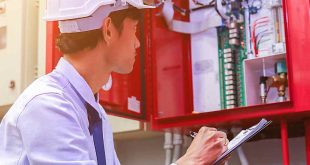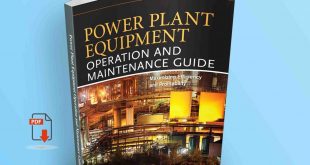Fundamentals of Preventive Maintenance
Preventive maintenance (PM) is a critical strategy for ensuring the longevity, reliability, and efficiency of equipment in any facility. Rather than waiting for a piece of equipment to fail, preventive maintenance involves regularly scheduled inspections, servicing, and repairs to address issues before they become major problems. This proactive approach helps reduce downtime, extends the life of machinery, and prevents costly emergency repairs. To build a successful preventive maintenance program, there are several key steps to follow.

Establishing Scheduling
Effective scheduling is the backbone of any preventive maintenance program. To begin, the frequency of maintenance for each piece of equipment must be defined. This depends on factors like the type of machinery, its usage, and the manufacturer’s recommendations. For example, high-usage equipment may require daily checks, while less critical machinery might only need monthly or quarterly servicing. Creating a comprehensive maintenance calendar is essential to keep track of tasks, ensuring that nothing is overlooked.
Once the frequency is set, prioritization becomes crucial. High-priority equipment that is essential for daily operations should be serviced first. Additionally, it is important to consider the equipment’s operating hours, as those that are in use for extended periods may need more frequent attention. Automation tools, like maintenance management software, can help by sending alerts when maintenance is due, ensuring tasks are completed on time and reducing the risk of overlooking critical tasks.
Breaking Your Facility into Logical Parts
Organizing your facility into logical sections can streamline the maintenance process and improve efficiency. Grouping similar equipment together, based on their function or location, makes it easier to manage and track maintenance schedules. For example, all HVAC systems can be placed in one zone, while production machinery may form another. This segmentation allows for better focus on specific areas, ensuring that critical equipment receives the attention it needs.
Additionally, creating visual aids, such as floor plans or labeled areas, can assist maintenance personnel in quickly locating the equipment they need to work on. A well-organized facility also helps identify potential problem areas or high-risk zones that might need additional resources or attention.
Developing an Equipment List
Creating a detailed inventory of all equipment in the facility is a foundational step in preventive maintenance. The equipment list should include not only the name and location of each machine but also vital information such as age, manufacturer, model, and condition. This data helps identify which equipment is most in need of attention and which items might require replacement in the near future.
By categorizing equipment according to its criticality and role in operations, you can prioritize which assets are most important to maintain. Additionally, tracking the maintenance history for each piece of equipment allows you to recognize recurring issues, helping to predict future maintenance needs. This proactive approach aids in scheduling repairs before failures occur and can lead to more informed decision-making regarding equipment replacement.
Writing PMs (Preventive Maintenance Tasks)
Once equipment is listed, the next step is to develop a set of standard preventive maintenance tasks (PMs) for each machine. These tasks should be detailed and easy to follow, ensuring that every maintenance technician performs the same actions in a consistent manner. Clearly written PMs reduce human error and ensure that no vital steps are overlooked.
Each task should include step-by-step instructions, safety protocols, tools and materials needed, and any specific manufacturer recommendations. For example, for a pump, the PM could involve lubricating parts, inspecting seals, checking for leaks, and cleaning filters. Additionally, safety instructions should always be included to ensure that maintenance is performed without incident.
Developing Equipment Manuals
Having comprehensive equipment manuals is essential for supporting preventive maintenance efforts. These manuals should contain detailed operational instructions, maintenance procedures, and troubleshooting guides. A well-structured manual ensures that technicians understand how each piece of equipment functions and the recommended steps to keep it running optimally.
It’s also important to update equipment manuals regularly to reflect any modifications, repairs, or changes to operational procedures. Manuals should be easily accessible to technicians, either in digital or physical form, ensuring that they can quickly reference them when needed. A good manual also includes information about common issues and solutions, making it easier for staff to diagnose problems and carry out repairs.
Setting Up Inventory
An organized inventory system is critical for maintaining preventive maintenance operations. Proper inventory management ensures that you always have the necessary parts and materials on hand when maintenance is due. Keep track of high-demand parts, such as filters, gaskets, lubricants, or electrical components, and ensure that there is always a sufficient stock available.
Inventory management systems, whether manual or automated, help monitor stock levels, track usage, and prevent overstocking or shortages. Regular audits of inventory should be conducted to ensure accuracy and efficiency. Additionally, establishing relationships with trusted suppliers ensures that parts can be ordered quickly when needed, minimizing downtime during maintenance.
Maintaining the System
The key to a successful preventive maintenance program is continuous improvement. As systems, equipment, and technologies evolve, so should your maintenance practices. Regularly reviewing maintenance schedules and tasks is essential to ensure they are still relevant and effective. New problems may arise as equipment ages, so technicians must be equipped to adapt.
Engaging maintenance staff in the process can lead to valuable feedback and insight into the system’s effectiveness. Technicians who work with the equipment daily are often the first to notice potential issues or areas that need improvement. Periodically auditing the entire preventive maintenance system helps identify inefficiencies or gaps, enabling adjustments to improve operations.
Planning for Success
A successful preventive maintenance program requires careful planning and dedication. Begin by setting clear, measurable goals. These might include reducing downtime, increasing equipment lifespan, or improving worker safety. Setting these goals provides direction and helps evaluate the program’s effectiveness over time.
Allocating adequate resources is also crucial for success. This includes providing the necessary tools, budget, and training for maintenance personnel. Well-trained staff are essential to the smooth operation of the program, as they ensure that PM tasks are completed correctly and on schedule.
Lastly, it’s important to track and monitor the progress of the program. Key performance indicators (KPIs) such as downtime reduction, maintenance cost savings, and equipment performance should be tracked. Using this data, adjustments can be made to improve the system and ensure that the goals of the preventive maintenance program are achieved.
Conclusion
Preventive maintenance is an ongoing process that requires careful planning, commitment, and the right systems in place. By following these fundamental steps—scheduling, organizing equipment, creating manuals, maintaining inventory, and continually assessing the program—you can ensure the longevity and efficiency of your equipment while reducing unexpected repairs and downtime.
 Boilersinfo Boiler and Mechanical Power Digital Library
Boilersinfo Boiler and Mechanical Power Digital Library





